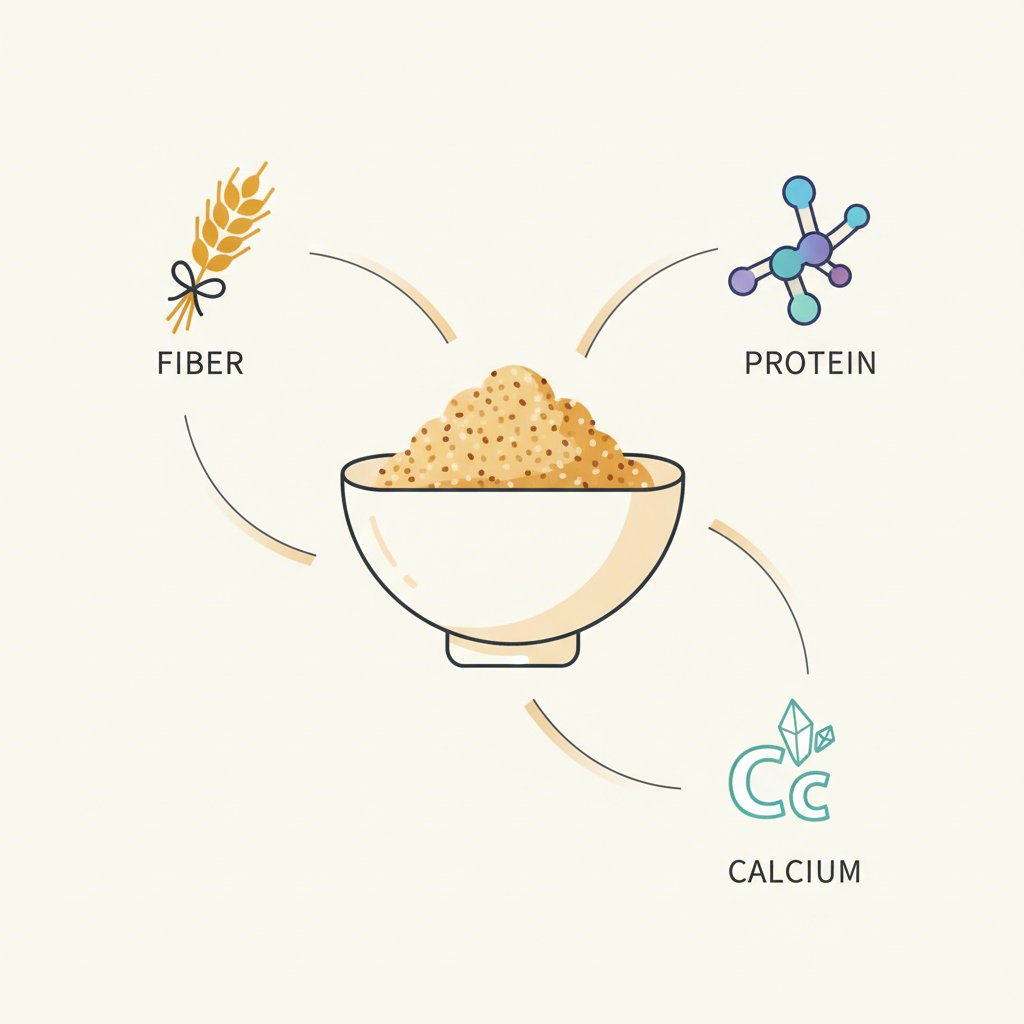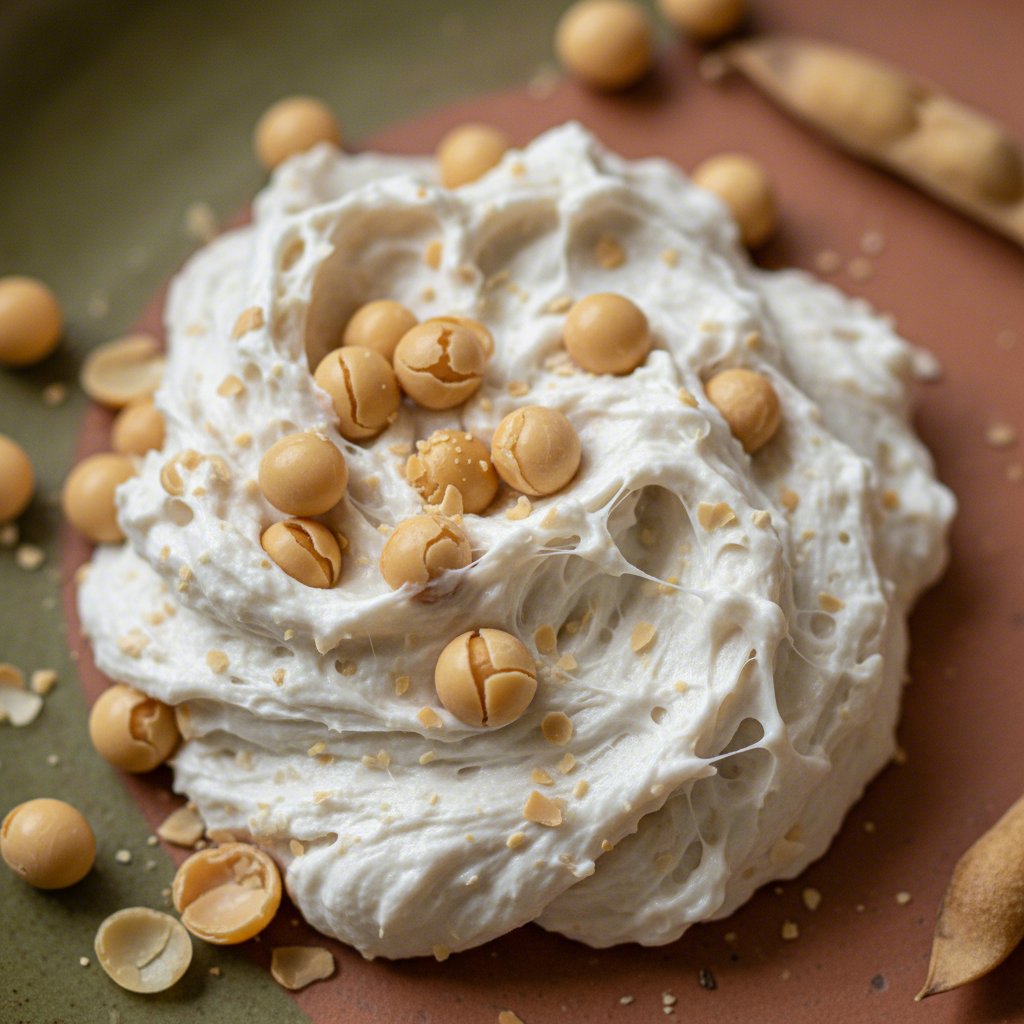TL;DR
Okara, often called soy pulp or tofu dregs, is the insoluble pulp of soybeans that remains after making soy milk or tofu. It is a highly versatile and nutritious food ingredient packed with insoluble fiber, protein, and calcium. Traditionally seen as a byproduct, okara is now valued for its health benefits and its role in creating delicious, high-fiber dishes while reducing food waste.
What Is Okara? A Detailed Explanation
Okara is the residual pulp left behind after pureed soybeans are filtered to produce soy milk and tofu. This food byproduct has been a staple in East and Southeast Asian cuisines for over a thousand years and is gaining recognition globally for its impressive nutritional profile and culinary potential. The production process is straightforward: soybeans are soaked, ground, and mixed with water to create a slurry. This slurry is then filtered to separate the liquid component, which becomes soy milk, from the solid, insoluble parts—the okara.
Physically, okara is a moist, finely ground pulp with a white or yellowish color, though a grayish version can be produced from black soybeans. Its texture is often described as slightly gritty or sandy before it is finely milled. Because it consists of the insoluble parts of the soybean, it retains a significant portion of the bean’s nutrients that are not water-soluble. Historically, this byproduct was often discarded or used as animal feed in large-scale commercial production due to its high moisture content (around 80%), which makes it highly perishable.
While the name “okara” is Japanese, this ingredient is known by many names around the world, reflecting its widespread use in various cultures. Understanding these names can help you identify it in different culinary contexts. Here are some of its common names:
- Soy Pulp or Soybean Pulp: A common descriptive term in English.
- Tofu Dregs: Another English term highlighting its origin as a residue from tofu making.
- Dòuzhā (豆渣) or Dòufuzhā (豆腐渣): The names used in Chinese cuisine.
- Biji (비지) or Kongbiji (콩비지): The terms used in Korean cooking.
- Unohana (卯の花): A poetic Japanese name for a popular side dish made with okara, which translates to “deutzia flower” because of its resemblance to the white blossoms.

The Nutritional Profile and Health Benefits of Okara
Despite being a byproduct, okara is a nutritional powerhouse. Its primary benefit lies in its exceptional dietary fiber content. According to a study published in the American Journal of Lifestyle Medicine, dried okara can contain between 57-59% dietary fiber, most of which is insoluble. Insoluble fiber is crucial for promoting digestive health, adding bulk to stool, and supporting regular bowel movements. This high fiber content also contributes to a feeling of fullness, which can aid in weight management.
Beyond fiber, okara is a valuable source of plant-based protein, retaining a significant amount of the soybean’s original protein. It also contains important minerals like calcium, potassium, and iron. Furthermore, okara is low in fat and contains beneficial compounds such as isoflavones, which are antioxidants that may offer various health benefits. Research suggests that incorporating okara into the diet can help improve glucose tolerance, manage cholesterol levels, and may reduce the risk of chronic conditions like diabetes and cardiovascular disease.
A critical point to remember is that okara must be cooked before consumption. Raw soybeans and their byproducts contain antinutritional factors like trypsin inhibitors and saponins, which can cause digestive issues such as nausea and bloating. The cooking process effectively destroys these compounds, making the nutrients in okara safe to eat and easier for the body to absorb. Therefore, always ensure any dish containing fresh okara is thoroughly heated.
Culinary Uses: How to Cook and Eat Okara
One of okara’s greatest strengths in the kitchen is its incredibly mild, almost flavorless taste and absorbent, pulpy texture. This neutrality allows it to be a versatile addition to both sweet and savory dishes, taking on the flavors of the other ingredients it’s cooked with. Its moisture-retaining properties can also improve the texture of baked goods, keeping them from drying out.
In traditional Japanese cuisine, okara is famously used to make unohana, a savory side dish where the soy pulp is sautéed with ingredients like carrots, burdock root, shiitake mushrooms, soy sauce, and mirin. However, its applications extend far beyond this classic preparation. Modern and international cuisines have embraced okara for its ability to add nutrition and substance to a wide variety of foods.
Here are some popular ways to incorporate okara into your meals:
- Vegetarian Patties and Burgers: Its texture makes it an excellent binder and base for veggie burgers, soysage, and meatballs.
- Baked Goods: Add it to muffins, breads, cookies, and even pizza crusts to boost fiber and protein content while creating a wonderfully moist crumb. It can also be used as a gluten-free flour substitute in some recipes.
- Thickener for Soups and Stews: Stir okara into soups, curries, or stews to add body and a creamy consistency without relying on dairy or starches.
- Granola and Nutrition Bars: Dehydrated okara can be baked into granola or mixed into homemade energy bars for a nutritious boost.
- Egg Substitute: In vegan cooking, its binding properties make it a suitable replacement for eggs in dishes like quiches and pâtés.

How to Find, Buy, and Store Okara
Finding okara can be straightforward, though its availability depends on your location. The most common source is as a direct byproduct of making your own soy milk at home. If you enjoy homemade plant-based milks, you’ll have a fresh supply of okara every time. For those looking to craft fresh, additive-free plant-based milks, Soy Milk Quick offers an expert guide to the best plant milk makers, helping you find the perfect machine for delicious homemade soy, oat, or almond milk.
If you don’t make your own soy milk, you can often find fresh okara at local tofu producers or Japanese and other Asian grocery stores, typically in the refrigerated section near the tofu. It is usually very inexpensive and sometimes even given away. You can also purchase dried okara, often sold as okara powder or soy fiber. Dried okara has a much longer shelf life and can be rehydrated for use in recipes or added directly to baked goods.
Proper storage is crucial, especially for fresh okara, due to its high moisture content and susceptibility to spoilage. Fresh, wet okara should be stored in an airtight container in the refrigerator and used within two to three days. For longer-term storage, it freezes exceptionally well. Simply pack it into freezer-safe bags or containers, where it can be kept for several months. Okara powder, on the other hand, should be stored like any other flour: in an airtight container in a cool, dark, and dry place.
Frequently Asked Questions About Okara
1. What is okara used for?
Okara is a highly versatile ingredient used in a wide range of culinary applications. It serves as a base for vegetarian burgers and patties, a nutritious addition to baked goods like muffins and bread, a thickener for soups and stews, and even as a vegan egg substitute in quiches. Its mild flavor allows it to easily absorb the taste of other ingredients in both savory and sweet dishes.
2. Is okara safe to eat?
Yes, okara is safe to eat, but it must be cooked first. Raw okara contains compounds like lectins and saponins that can cause digestive discomfort. Cooking or heating the okara destroys these antinutrients, making it completely safe for consumption and allowing your body to absorb its beneficial nutrients effectively.
3. What does okara taste like?
Okara has a very mild, neutral, and slightly bean-like flavor, often described as bland or flavorless on its own. This is actually one of its greatest culinary advantages, as it allows okara to act as a blank canvas, readily taking on the flavors of the sauces, spices, and other ingredients it is cooked with.
4. What is another name for okara?
Okara is known by several other names, most commonly soy pulp, soybean pulp, or tofu dregs. In Chinese, it is called dòuzhā, and in Korean, it is known as biji or kongbiji. These terms all refer to the same insoluble soybean residue from the production of soy milk and tofu.
